Bright relief at the end of a spice-laden meal.
Colonial Calcutta, today Kolkata, is in the heart of Bengal. In Bengali cuisine, the meal unfolds like a raga — starting with bitter, moving through savory and sour, and ending on a sweet, contemplative note. But “sweet” doesn’t mean dessert, at least not in the Western sense. It means chutney — a delicate, sticky, gently spiced finale that doesn’t overwhelm the senses but balances them.
This Tomato and Prune Chutney is that thoughtful final note. Traditionally known as tomato aar pruner chutney, it’s bright with tomato, deepened by dried prunes, and layered with just enough warmth to tether it to the meal that came before.
🌿 The secret? Jeera Bhaja Masala.
At the very end — when the chutney has thickened, the sugar has melded with the fruit, and the red chilies have left their gentle heat — you finish it with a dusting of Jeera Bhaja Masala, the Bengali roasted cumin blend. This isn’t garam masala. It’s lighter, smokier, and simpler: just roasted cumin, sometimes with fennel or black pepper, ground into a warm, earthy powder.
This final flourish is what makes the chutney Bengali. It’s not just technique — it’s timing.
🍬 After the chutney: Mukhwas In the classic Indian meal progression, a final, often overlooked element appears after the chutney — mukhwas, a colorful mixture of sugar-coated fennel seeds and digestive spices. It refreshes the palate and prepares the body to digest. This sequence — from spice to sweet to cooling aromatic — contrasts with other cultural meal structures.
🍽 Meal Structure: East vs. West vs. TikTok Middle Eastern meals typically present all dishes at once — a beautiful spread meant to impress through abundance. European meals focus on linearity and social pacing, with clear divisions between appetizer, entrée, salad, and dessert.
But in the age of TikTok, a new dynamic is emerging: the “wow all at once” effect, versus the “step-by-step” reveal. The first floods the table with beauty and color — think mezze or a lavish Indian thali. The second invites attention and admiration for each course, allowing flavor, plating, and storytelling to build momentum.
The Bengali meal progression sits somewhere in between — a thoughtful arc of flavor and texture, culminating in chutney and followed by something fragrant and final.
🥄 Recipe: Tomato and Prune Chutney Tomato aar Pruner Chutney – Adapted from Bengali tradition
A sweet and tangy chutney to complete a Bengali meal. Just a couple of teaspoons per person is perfect.
🧂 Ingredients:
4 ripe tomatoes
1½ tbsp rapeseed (canola) oil
1 tsp Paanch Phoron (Bengali 5-spice)
2 dried red chilies
3 tbsp sugar
120 ml (scant ½ cup) water
8 dried pitted prunes
1 tbsp raisins
½ tsp Jeera Bhaja Masala (recipe below)
Salt, to taste
🔪 Method:
Prepare the tomatoes: Cut each tomato into eighths. Remove the stalks by slicing a small V in each half.
Temper the spices: Heat oil in a karai or wok. Add the paanch phoron and red chilies. Let them crackle and bloom — about 1 minute.
Cook the tomatoes: Stir in the tomatoes and let them soften. Add sugar and salt. Cover and cook for 5 minutes.
Simmer with fruit: Add water, prunes, and raisins. Simmer uncovered, stirring occasionally, until it thickens — about 10 minutes.
Finish and serve: Turn off the heat. Transfer to a bowl and sprinkle Jeera Bhaja Masala on top. Serve at room temperature or slightly chilled.
🌾 Jeera Bhaja Masala (Bengali Roasted Cumin Blend) This spice mix is deceptively simple — dry roasted cumin seeds, sometimes with fennel and black pepper, ground into a powder. It’s the Bengali answer to finishing salt.
Ingredients:
4 tbsp cumin seeds
1½ tsp fennel seeds (optional)
½ tsp black peppercorns (optional)
½ tsp ground dry ginger (optional)
Method: In a dry skillet, roast the spices over medium-low heat until aromatic and deep golden — about 3–5 minutes. Do not burn. Let cool, then grind to a powder. Store in an airtight jar. Keeps 2–3 weeks at room temp.
🧀 Beyond Tradition: Creative Serving Ideas We honor the chutney's traditional role in the Bengali meal, but it also shines in modern, unexpected pairings:
1. With ricotta, cantaloupe, and cucumber ribbons — A play on Italian mostarda, this balances creamy, fresh, and tangy elements. Plate with artful contrast and spoonfuls of chutney.
2. As a cheese plate condiment — Try it with goat cheese, manchego, or paneer. The sweet-acidic profile matches beautifully with salty, firm cheeses.
3. Alongside grilled meats or cold roast lamb — Especially in summer, this chutney becomes a glossy sauce or dip. We’ll soon offer a lamb curry recipe that features it.
4. As a chutney finale to a meal served in full TikTok glory — Let it sparkle against a lush table of bold dishes. Or let it close the curtain, one teaspoon at a time.
📌 Aunt Rahele’s & Copeland Marks’ Versions For comparison, we’ve also explored two Anglo-Indian chutneys:
Aunt Rahele’s: Simpler, with ginger, tamarind, and malt vinegar, finished in oil.
Copeland Marks’: Spiced with cardamom, cloves, cinnamon, and designed for longer shelf life.
Both are rich in flavor, with European techniques (preserving, boiling) layered over Indian instincts. But for instructive, traditional value — we focus here on the Bengali version.
want to try?
🔗 The story of a meal is not just about what’s served — but how it ends. And sometimes, a spoonful of chutney says more than dessert.




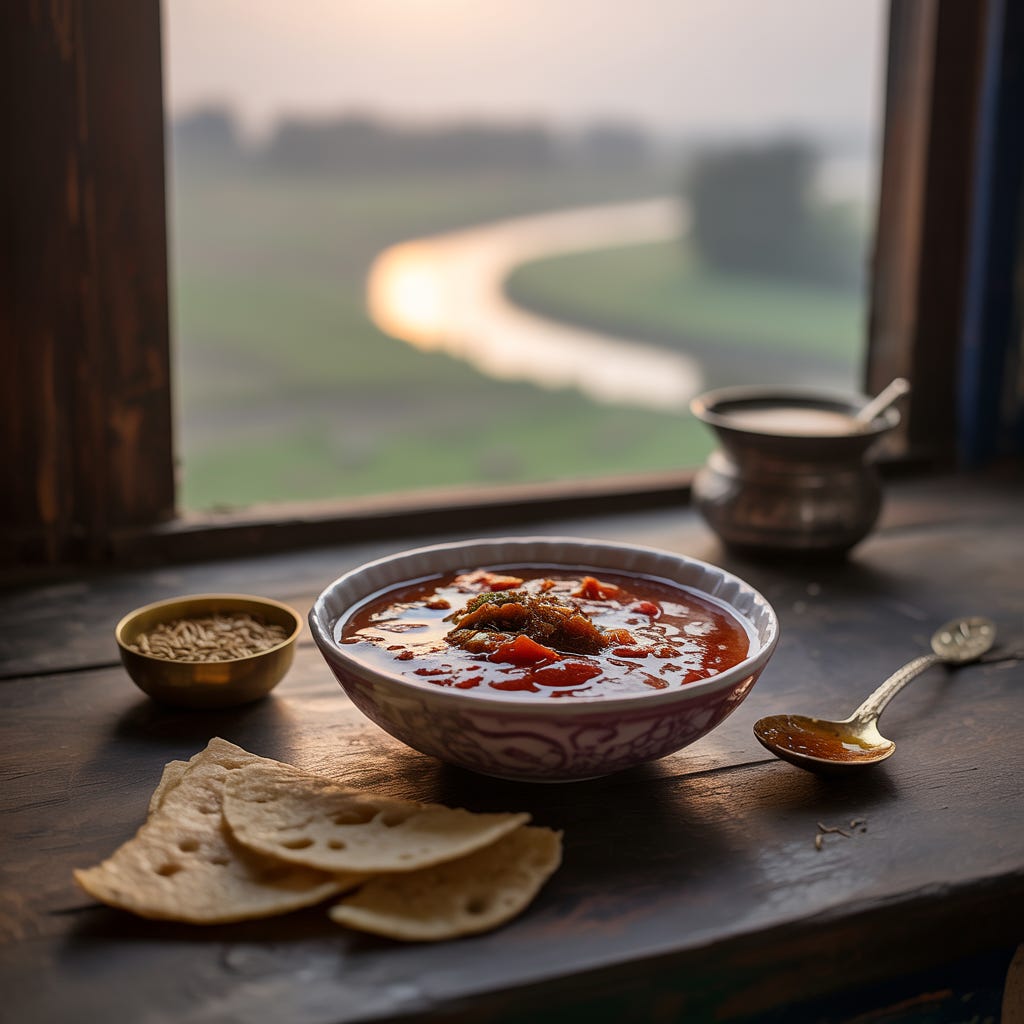
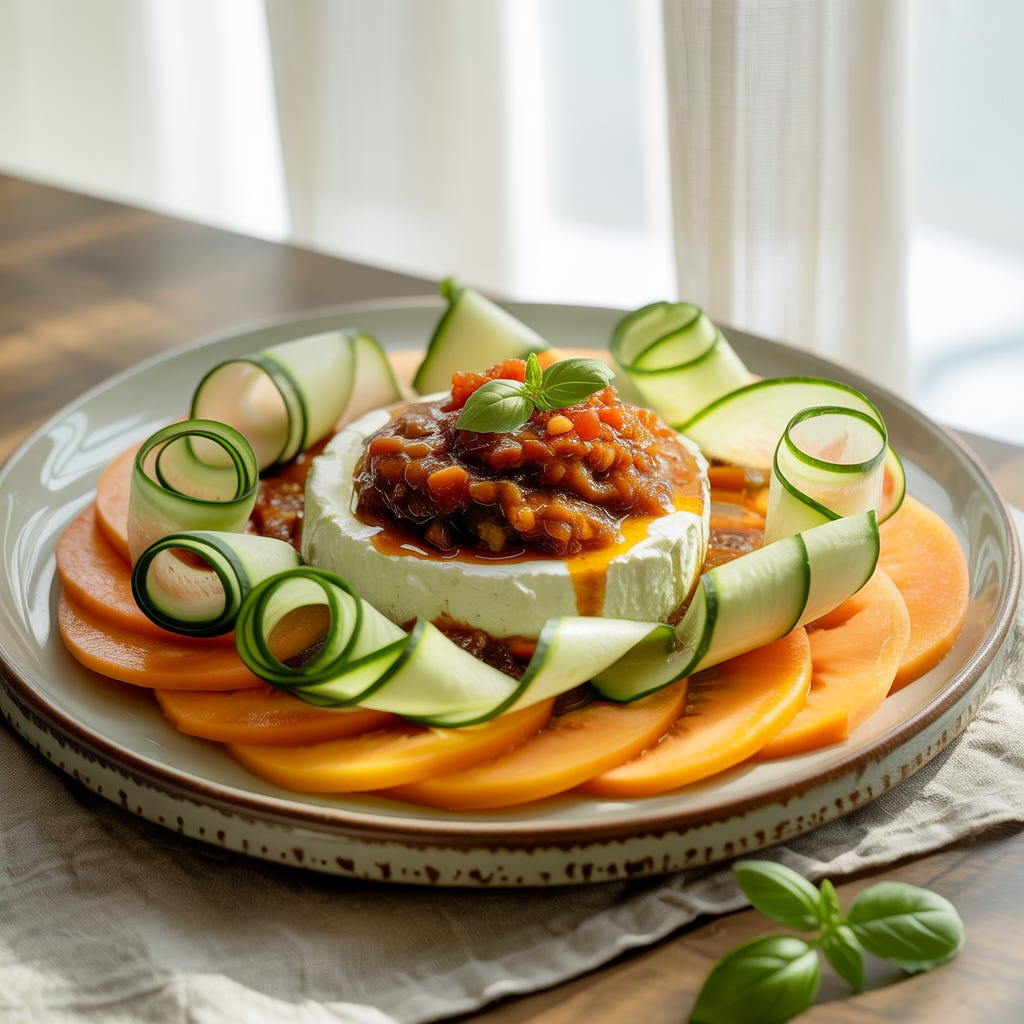
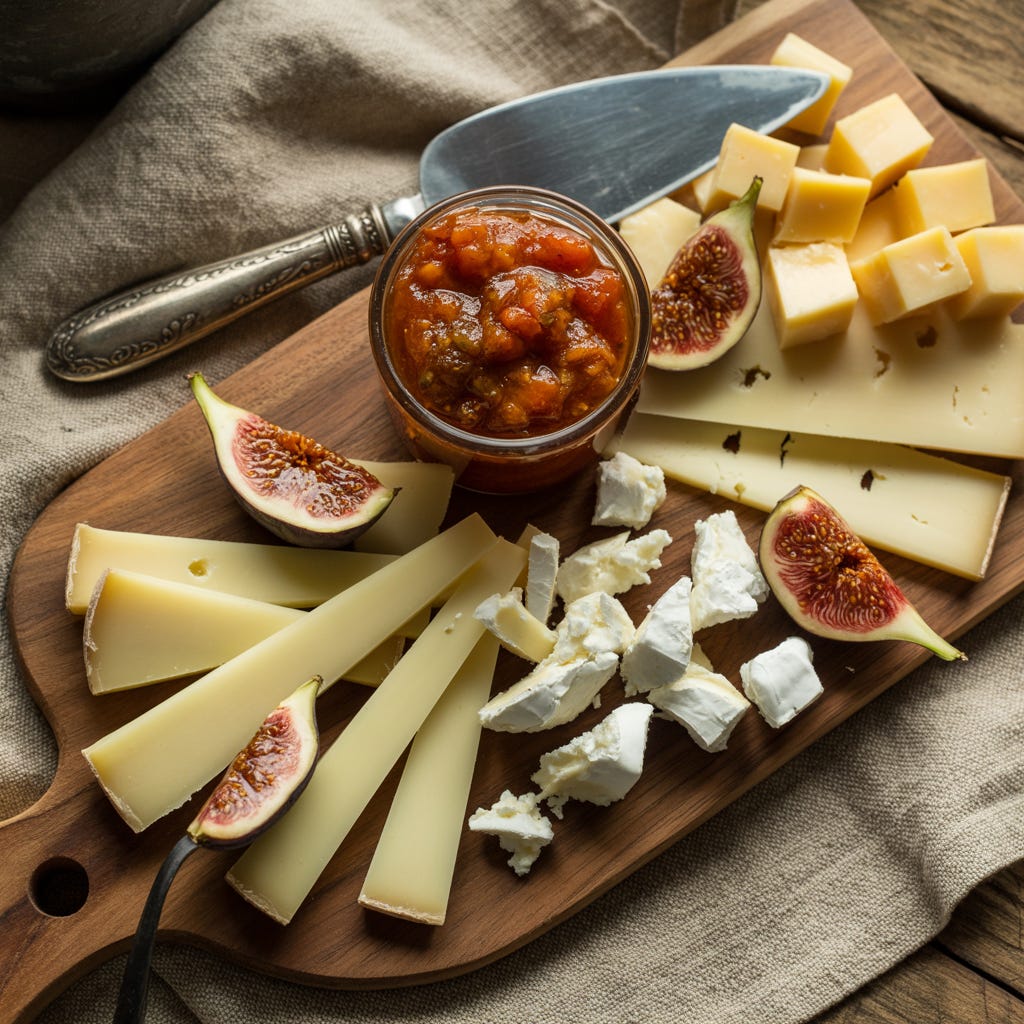
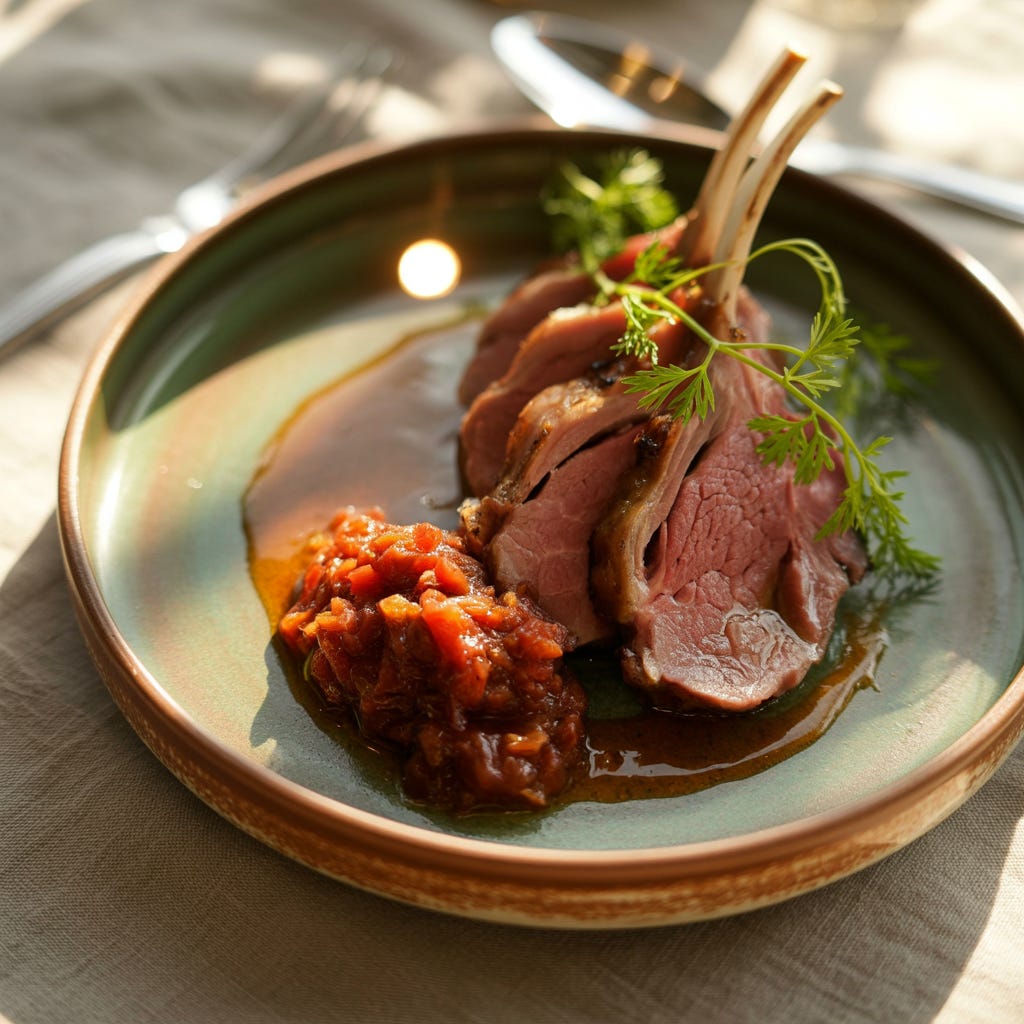
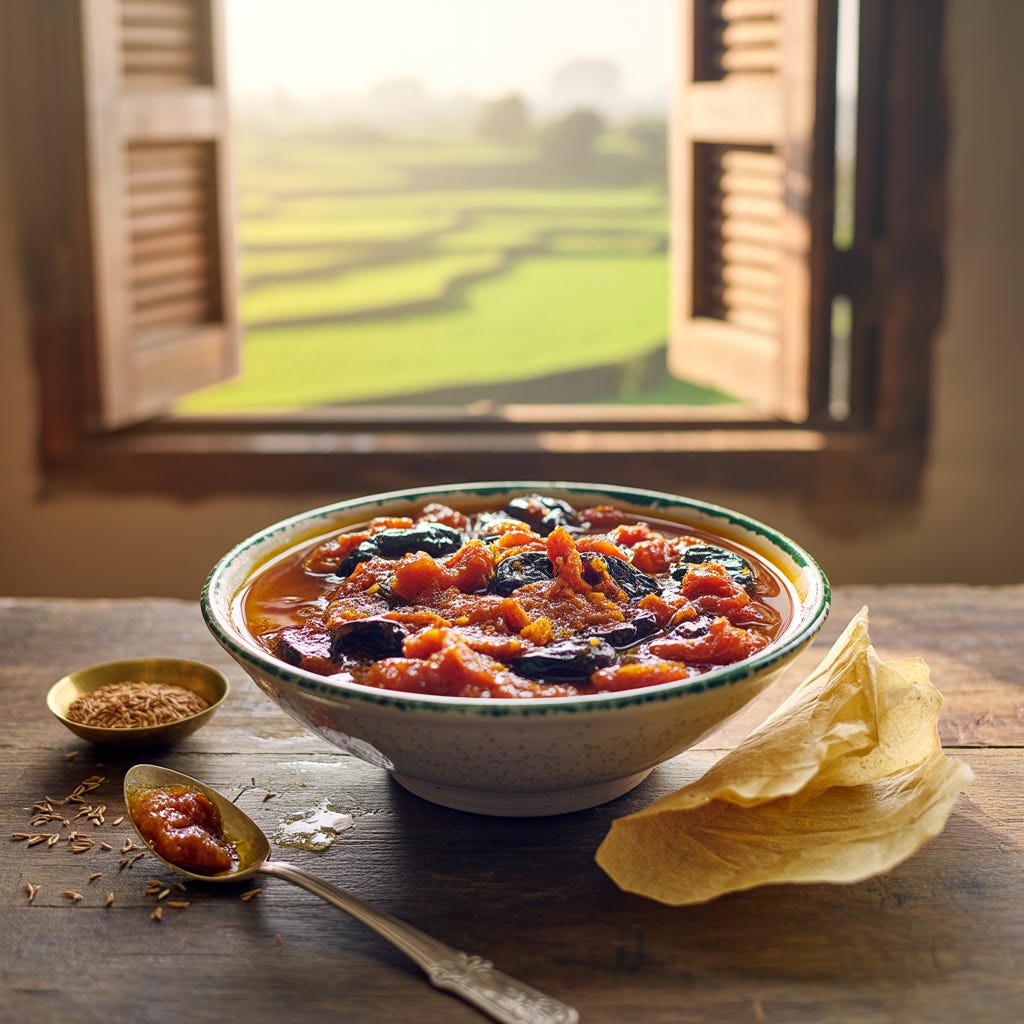
Sunny asked me for aunt Rahele`s simpler recipe. Here its is:
Aunt Rahele’s Tomato Chutney
Ingredients:
- 3 lbs ripe tomatoes
- 1 cup malt vinegar
- 2 tsp tamarind paste
- 1 tbsp canola oil
- 1-2 tbsp sugar (adjust to taste)
- 1 tsp grated fresh ginger (or to taste)
- 1 tsp minced garlic (or to taste)
- 1 tsp salt (or to taste)
- Green chilies, finely chopped (optional)
Method:
1. Wash and dry the tomatoes. Boil them in the vinegar and tamarind paste until softened and reduced to a pulp.
2. Pass the mixture through a strainer to remove the skins and seeds.
3. Return the strained tomato pulp to the pot. Add sugar, ginger, garlic, salt, and chilies (if using).
4. Heat 1 tablespoon of canola oil in a pan and stir it into the mixture.
5. Bring the mixture to a boil, then lower the heat and simmer until thickened to your desired consistency.
6. Let the chutney cool completely before storing it in an airtight container. Refrigerate and consume within one week.
Serving Suggestions:
This chutney pairs beautifully with chops, schnitzels, pantras, cutlets, or even as a dip for flatbreads.